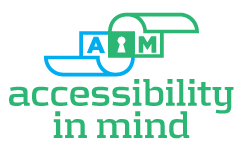PDF/UA clarifies and simplifies the PDF-specific technical requirements to meet WCAG 2.0.
WCAG 2.0 is regarded as the primary standard for web accessibility by national governments around the world, and is referenced in the U.S. Access Board's new rules that updates accessibility requirements for information and communication technology (ICT) in the federal sector covered by Section 508 of the Rehabilitation Act. The six-year process of updating these requirements constitutes the first refresh since Section 508 was created in 1998. The rule is slated to go into effect in March, 2018, and references WCAG 2.0 and PDF/UA as the standard for compliant PDFs.Creating PDFs that meet the WCAG 2.0 success criteria requires specific PDF authoring and remediation techniques. WCAG 2.0 was developed as a technology-independent standard and provides individual (normative) success criteria for accessibility which are general enough to apply across technologies, including a growing set of techniques for HTML, CSS, Scripting, PDF, Flash, and more. The Access Board's update states that all electronic documents must "conform to all Level A and AA Success Criteria in WCAG 2.0 or ISO 14289-1 (PDF/UA-1)." This proposal for accessible electronic support documentation is derived from the existing guidelines, but would newly require PDFs to comply with PDF/UA.
WCAG does not presently represent a complete set which encompass all technical requirements for accessibility in all PDF documents. This is where PDF/UA provides help. PDF/UA provides normative technical specifications for the use of the PDF format, defining proper structure and syntax to enable reliable access. This includes identification of necessary tagging structures, how to specify alternative text for images, how to ensure correct Unicode mappings for character glyphs, and many other file, page and object-level specifications, as well as how Reader applications and assistive technologies can fully process PDF/UA conforming files to maximize accessibility.
PDF/UA defines the technical specifications to enable PDF documents to meet WCAG 2.0, but WCAG 2.0 has additional requirements which require an author’s attention. The areas where WCAG 2.0 has additional requirements include time-based media (guideline 1.2), scripting and actions (e.g. success criteria 3.2.1 and 3.2.2), and certain types of content (e.g. success criteria 2.4.4). For these and other additional requirements, the W3C’s technique documents (both general and PDF-specific techniques) provide guidance for authors interested in complying with WCAG 2.0.
WCAG 2.0 summarizes web accessibility using four broad design principles:
- Content must be perceivable.
- Interface elements in the content must be operable.
- Content and controls must be understandable.
- Content must be robust enough to work with current and future technologies.
AIIM, the governing body for ISO standards, published a document that shows how to achieve WCAG 2.0 through the use of the PDF/UA standard. It can be found here: http://www.aiim.org/Research-and-Publications/standards/committees/PDFUA/WCAG20-Mapping

